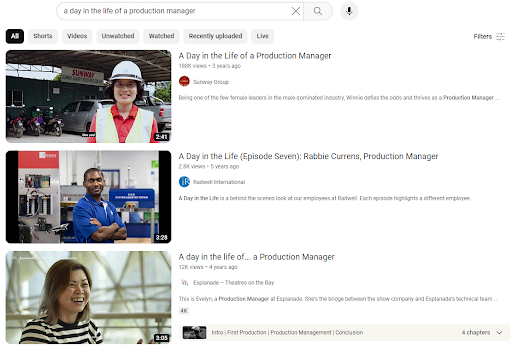How to Save Money on Content Creation: 12 Cost-Effective Tips

Good content marketing on a budget? High-quality content that is also affordable?
Impossible, right?
Wrong!
The holy grail is to keep your expenses low, without cutting corners in terms of quality.
First, let’s outline these deadly sins of content creation, which you should avoid at all costs:
- Content that’s irrelevant to your target audience
- Boring and lifeless content
- Inaccurate information
- Tone that doesn’t match your brand or target market.
If your content stoops to those levels, you’ll disappoint your audience, losing engagement and sales.
Maybe you’ve already had a wake-up call like that?
The problem is – high-quality content doesn’t come cheap. On the other hand, you can’t afford to splash big cash on every blog post or video.
Fortunately, there are some things you can do to reduce costs of content creation, while still maximizing the quality of your output. Let’s dive in and take a look at some tips for cost-effective content creation.
12 Tips To Create Top Content On A Budget
Tip #1: Know Your Audience Inside Out
Before you even start thinking about the type of content you want to create, let’s get laser-focused on your audience.
- Who are you trying to reach?
- What are their fears, frustrations, wants, and aspirations?
- What kind of content resonates with them most?
One way to do market research on a budget is to visit places where your audience hangs out. This could be Facebook or LinkedIn groups, Reddit, or Quora, for instance.
Another powerful way to find out about your target market is to search for YouTube videos related to your audience.
Let’s say you sell a manufacturing tool for factory managers. Go to YouTube and search for “A day in the life of a production manager”. You should get plenty of insights into the common problems and challenges of your audience that way, as well as plenty of content ideas.

If you want to get a robot’s opinion, you can use an AI tool like ChatGPT to help. Use a prompt like this:
“Act as a factory production manager. You will answer all my questions in a friendly conversational way. You will give me detailed responses that include real-life examples to illustrate your points.”
Then you can interview your friendly AI chatbot to get some more insights. The answers may not always tally with real life, but you can apply your judgment to filter down to the gold.
Using some cost-effective ways to do audience research like this saves you from wasting resources on content that falls flat.
Tip #2: Mine Your Data
Forget throwing spaghetti at the wall and hoping it sticks. Instead, try to nail down the type of content that already resonates with your audience.
This means digging into your website analytics, social media insights, and email engagement metrics.
- What kind of content drives the most traffic, clicks, shares, and conversions?
- Are there specific blog post formats, video styles, or infographics that outperform the rest?
Once you’ve identified your high performers, double down on them. Try to replicate the elements that work. Experiment with small variations on themes and analyze the results further. A data-driven approach is always better than shooting in the dark.
Tip #3: Embrace AI
You don’t need to brainstorm on your own anymore. Use a second brain in the form of artificial intelligence (AI).
Powerful AI tools are now available to us mere mortals, with a monthly subscription to ChatGPT setting you back just $20. It’s the most powerful AI chatbot yet and it costs less than a month’s worth of coffee! Think of it as a low-cost content creation assistant.
Plus you can use it wherever you go on the smartphone app, so as soon as a content idea pops into your head, you can get working on it.
Here are a few tips to stretch your content budget further with AI:
Create smarter briefs
AI-powered chatbots like ChatGPT, Claude, and Bard help you translate your goals and audience insights into clear, concise briefs. A good brief acts as a roadmap for writers, keeping them on the right track and avoiding too many revisions.
Sample Prompt
Create a content brief for a blog post aimed at factory managers interested in energy conservation. Cover key strategies for cutting energy use, like adopting new tech, optimizing processes, and changing behaviors. Emphasize the benefits of energy audits, efficient machinery, and using smart tech for energy management. Highlight the cost savings and environmental impact. Use a supportive and friendly tone, with examples of successful energy reduction projects.
Use AI as a brainstorming partner
If you’re stuck for ideas, you can use AI to analyze topics, trends, and competitor content. The great thing about an AI chatbot is that it’s like a 24/7 brainstorming partner. You can bounce ideas around, get the chatbot to refine existing ideas, or suggest new ones.
Sample Prompt
List content ideas for factory managers on improving operations and managing teams better. Include topics on lean manufacturing, team leadership, and using tech like IoT and AI to boost efficiency. Look at trends and challenges in training staff and building a culture of improvement. Suggest articles with practical tips, tech insights, and advice for increasing productivity and team motivation.
Optimize your content
AI tools can help identify high-performing keywords and suggest related topics that will help you rank higher in search engines. You can also get AI writing tools to repurpose existing content into new pieces, such as creating social media posts from long-form blog posts.
But don’t get too lazy. Generative AI output still needs to be edited to give it a human touch. If you post content straight from AI, you run the risk of annoying your audience with repetitive or lifeless content, or even worse – inaccurate information.
Tip #4: Tap into Internal Expertise
Rather than relying entirely on your marketing team or freelancers to create content, why not look closer to home? It’s a home-grown way to get good content marketing on a budget.
There’s a good chance that there are people within your company who are a goldmine of content ideas and insights. Identify and leverage internal experts using the following process:
1. Do a skills audit
There could be a well of untapped insights just waiting to be found in your company. Organize a skills audit to uncover hidden talents and knowledge. Use surveys and interviews to find out what people know and what relevant skills they have.
2. Repurpose existing knowledge
Engineers passionate about product development? Sales reps with deep customer insights? Encourage them to share their expertise through blog posts, internal newsletters, or even short explainer videos. If you don’t have in-house content creators or lack the time to do it yourself, put the experts in touch with freelancers to interview them, get insights, and produce content for you.
3. Incentivize participation
Recognize and reward employees who contribute to your content efforts. Offer public shoutouts, internal recognition programs, or even small monetary incentives to motivate participation and show appreciation.
4. Encourage collaboration
Build links between content creators and subject matter experts. Internal workshops, brainstorming sessions, or even casual “knowledge-sharing” lunches can spark valuable content ideas and ensure accuracy.
Tip #5: Enlist Guest Posters
A powerful way to get high-quality content is to build relationships with talented external content creators and ask them to guest post for you. Engage with them online, and offer exposure and backlinks in exchange for high-quality content.
You can even go beyond just backlinking by including social media promotion or future collaborations. A good network of guest posters is great for getting fresh perspectives, diverse voices, and brand advocates – all without eating too much into your budget.
Tip #6: Find Top Freelance Talent
Don’t waste time on freelancers with rock-bottom prices. Eye-watering rates are no good either. Look for freelancers that hit the sweet spot of fair rates, valuable experience, good skills, and brand alignment.
Platforms such as Upwork or Fiverr are good places to start. Aim for freelancers with a high rating and plenty of positive feedback. Build long-term partnerships by presenting freelance creatives with clear briefs, timely payments, and mutual growth opportunities.
Tip #7: Repurpose Existing Content
Repurposing existing content is like giving your content a second life and reaching new audiences without starting from scratch. It’s a cost-effective way to get maximum impact from the content you’ve already invested in.
Here’s how to do it:
- Break down blog posts: If you have a comprehensive guide or article, break it down into smaller pieces. Each section can become its own blog post, social media post, or even an infographic.
- Turn webinars into video tutorials: Recorded webinars are ideal for editing into shorter video segments focusing on specific tips or tutorials. Share them on your website, social media, or YouTube channel, making the content available for those who missed the live session.
- Create podcast episodes from interviews: If you have interviews or panel discussions, consider repurposing the audio into podcast episodes. This format is perfect for audience members who prefer listening over reading and can help you tap into the growing podcast listener base.
- Develop e-books from a series of posts: Gather related blog posts and compile them into an e-book. You’ll need to change the content slightly to make it flow, but it’s worth the effort as e-books serve as great lead magnets to attract new subscribers or customers.
- Share customer testimonials: If you have credibility-building customer testimonials or case studies, don’t limit them to your website alone. Share on social media, include them in your newsletters and even feature them in sales pitches.
Tip #8: Refresh Old Content
Updating and improving old content will breathe new life into it. Not just in terms of relevance and readability for the audience, but also for SEO.
Refreshing a blog post that has performed well on search engines is an excellent way to ensure it stays in the top rankings. Search algorithms prefer fresh, up-to-date content. A blog post or article that has been revised and updated with new information, stats, images, and source links will have a better chance of building on existing SEO value and performing even better.
Here’s a strategy you can use to make old content shine like new:
- Audit your existing content: Look for evergreen pieces that performed well in the past or topics that are still relevant but need a modern twist. These are prime candidates for a refresh.
- Update statistics and examples: One of the easiest ways to update content is by revisiting any statistics, case studies, or examples used. Markets evolve and new data becomes available, so make sure you use the latest stats.
- Incorporate recent trends: What was cutting-edge a year ago might be old hat now. Add sections to address recent trends, technologies, or methodologies. This also shows your audience that you’re keeping pace with industry changes.
- Improve SEO: Use tools to identify new keywords that have emerged since you first published your content.
- Enhance readability: Sometimes, all a piece needs is a little structural tweaking to make it more engaging. Break down large paragraphs, use simple plain English, add subheadings, and include bullet points to make the content easier to digest. Adding other elements like images or videos can also improve engagement.
- Promote again: Once updated, treat your content like it’s brand new. Share it across your social media channels, include it in your newsletter, and consider paid promotion on PPC or native networks to give it an extra push.
Tip #9: Use UGC (User Generated Content)
UGC is content that has been written or recorded by the people who know your product or service: your customers or subscribers. It’s a great way of letting happy customers showcase your brand.
But how can you do user-generated content marketing on a budget? Building a community around your brand on social media, and then encouraging members to share their product experiences is a good way. It’s free authentic content that helps generate trust.
You can highlight people’s stories on your platforms and use a specific hashtag to keep everything organized. Remember to pick content that fits your brand and always ask for permission to use their posts.
A good UGC campaign example is fashion brand ASOS’s Instagram promotion that used hashtags: “#AsSeenOnMe” and #OOTD (outfit of the day). This was a successful, cost-free brand promotion that encouraged people to create and share images of themselves wearing ASOS clothing.

Tip #10: Use AI Writing Tools Wisely
If you want to save money by using AI writing tools for first drafts, make sure to use them in a creative way, not a lazy way.
Give the AI a clear and detailed brief if you want to get good output. The AI writing tools that are out there at the moment will cut down a lot of time and save money, but they’re not capable of doing the whole job for you.
Once you have pieced together a first draft from the AI, you need to personalize it with your brand’s voice, as well as adding a human touch for humor and warmth. It’s a good idea to include real stories, anecdotes, or case studies where possible.
Make sure you don’t cut too many corners though. If your content has a machine-generated feel to it, people are likely to disengage quickly, which can also affect your SEO ranking.
Tip #11: Check Grammar with Tools
One thing that can turn people away from otherwise good content is poor grammar and flow. Fortunately, there are plenty of tools you can use to help you with that these days, including AI chatbots such as ChatGPT or dedicated grammar tools like Grammarly.
These tools will help you to pick out potential problems such as:
- Grammatical mistakes
- Clunky phrasing
- Tone inconsistencies
Please note that, once again, AI isn’t perfect. If the content needs to be very high-quality, e.g. for a published book or high-priority white paper or report, then it’s probably best to hire a top-rated human editor.
Tip #12: Monitor and Adjust
Creating content on a budget doesn’t mean you can ignore stats and metrics. It’s worth the effort of monitoring your content performance and adjusting it to suit. Even if you have to spend a bit of money, when done well it will cut costs in the long run.
How to keep track
- Use free tools: Google Analytics and built-in social media insights.
- Listen to feedback: Pay attention to comments and direct messages.
Be ready to change
- Stay agile: If certain content topics or types hit home with your audience, shift your focus and resources to create more of the same.
- Experiment: Try out different content forms, posting times, and channels to see what gets the best response, and use those insights to fine-tune your approach.
Make adjustments
- Reallocate your budget: Put more money into the types of content and channels giving you the best returns.
- Update your content plan: Regularly update your plan to include more of the topics and formats that drive engagement.
Create Big, Spend Small(er)
So there you have it, 12 top tips to do content marketing on a budget, while still putting out great content that engages your audience.
Creating content with minimal costs and maximum value might seem impossible, but you can achieve it by staying in tune with what your audience wants and the quality they expect.
Good luck with your content creation!











